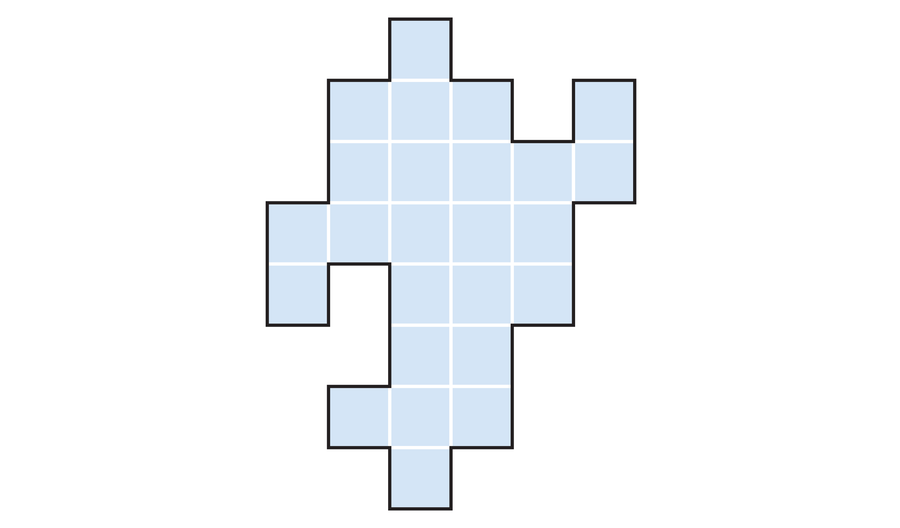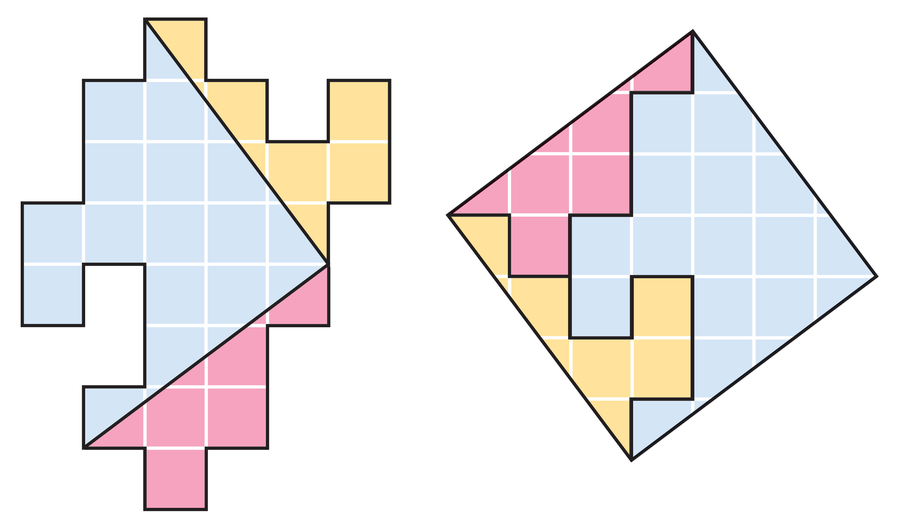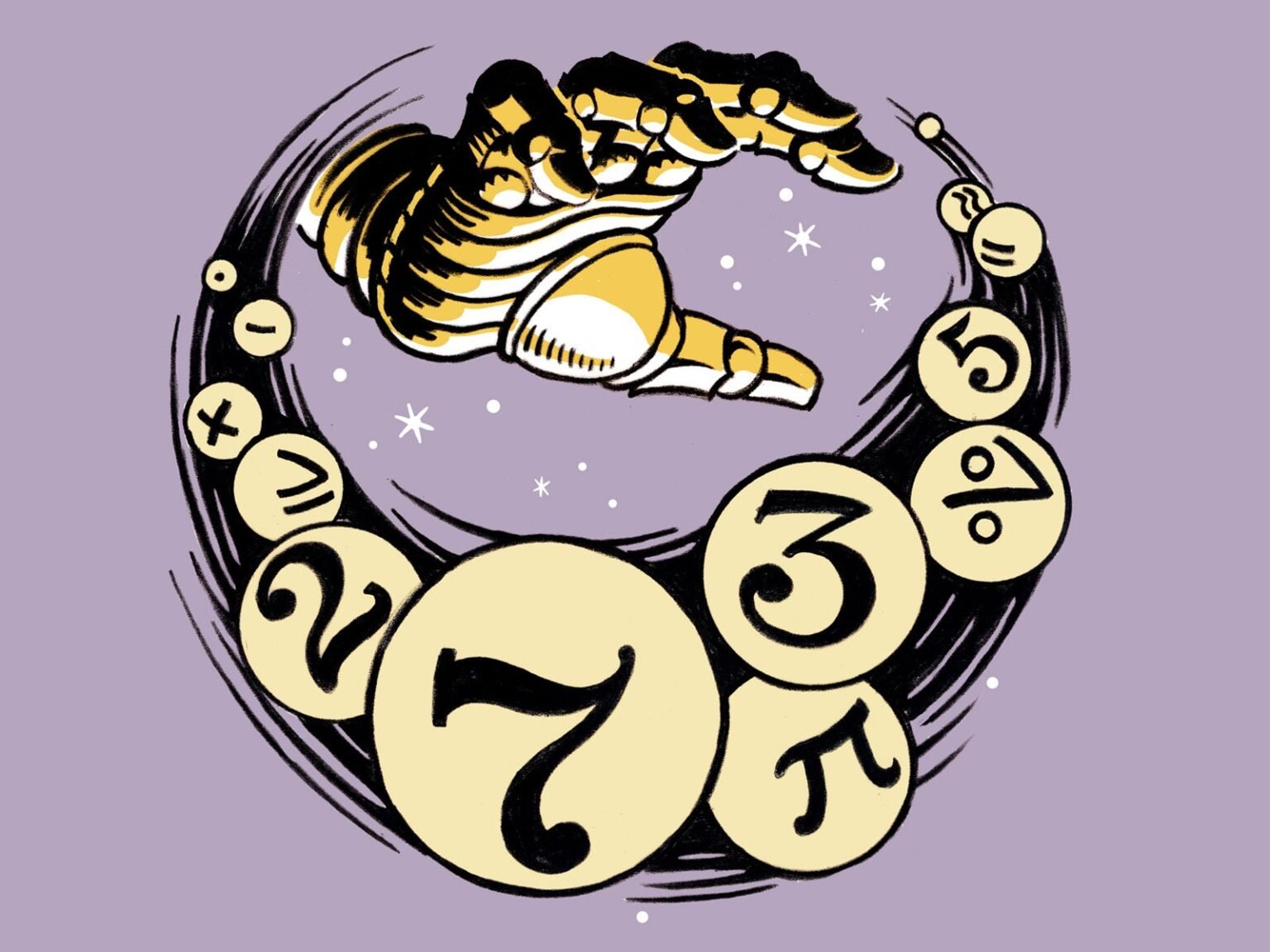
Divide this image into three parts that can fit into a square. The pieces should not be folded to make their current towards the front, they should not overlap, and there should be no gaps in the square.
For simplicity, let’s assume that the small squares have a side length of 1. The figure is made up of 25 small squares, so the final square must have a side length of 5. In this case, small 5 × 5 squares are available, but there is no proper way to separate them along the grid lines. The instructions, however, do not prohibit cuts that do not pass through the square grid. Using the Pythagorean theorem, it can be confirmed that the two diagonal cuts below have a length of 5.

We’d love to hear from you! Send to email address games@sciam.com to share your experience.
This puzzle appeared first the spectrum of science and reproduced with permission.

